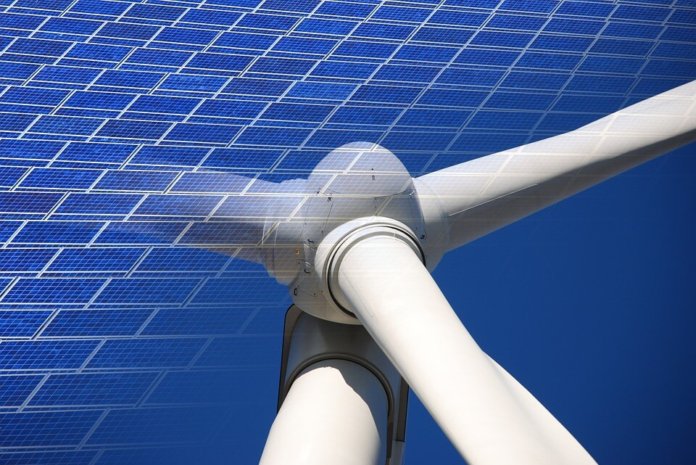The U.S. Department of Energy (DOE) has announced nearly $9 million in funding for 15 tribal energy infrastructure projects, including a number of wind and solar facilities.
The funding, available through the DOE’s Office of Indian Energy Policy and Programs, is designed to help Native American and Alaska Native communities harness their vast undeveloped energy resources to reduce or stabilize energy costs, as well as increase energy security and resilience, according to the DOE. The projects are the result of a competitive funding opportunity announcement announced on Feb. 16.
The projects are as follows:
- Alaska Village Electric Cooperative Inc. and Stebbins Native Corp. will install a 900 kW wind turbine to provide power to two remote communities in rural Alaska, reducing diesel fuel use by approximately 167,500 gallons each year.
- Bishop Paiute Tribe in Bishop, Calif., will install at least 108 kW of new solar PV systems on 38 existing owner-occupied, single-family homes for low-income families. This adds to the 118 solar systems, totaling over 404 kW, already installed on residences on the reservation.
- The Citizen Potawatomi Nation in Shawnee, Okla., will install 4.0 MW of distributed generation powered by natural gas to reduce and stabilize energy costs, expand energy independence and reduce the amount of coal-fired power.
- The Coeur d’Alene Tribe in Plummer, Idaho, will install energy efficiency measures (EEMs) and deploy a solar PV system for its senior housing complex.
- Ho-Chunk Inc., owned by the Winnebago Tribe of Nebraska, will install 320 kW of solar PV to serve nine tribal facilities. This project will add 320 kW of installed solar capacity to the existing 400 kW for a total of 720 kW toward the tribe’s near-term goal of 1 MW.
- The Newtok Village Council in Alaska will install a heat recovery system that will transport heat from the generator cooling loops in the village’s power plant to the community buildings. The project will also implement EEMs.
- The Picuris Pueblo, in partnership with the Northern Pueblos Housing Authority in Santa Fe, N.M., is building on the success of its completed 1 MW solar PV system with the development of a second 1 MW solar system in northern New Mexico.
- The Penobscot Indian Nation will install EEMs and a rooftop solar PV array during the construction of its new tribal administration building in Maine.
- The Pribilof Islands Aleut Community in St. Paul Island, Alaska, will replace refrigeration equipment and display cases with energy efficient systems; use waste heat to provide heat; and lower the cost of energy and maintenance for the Aleut Community Store.
- The Rosebud Sioux Tribe Tribal Utilities Commission in South Dakota will install 250 kW of solar PV to offset approximately 45% of the electric load of the 30 housing units and one community building that comprise the Sicangu Village.
- The San Pasqual Band of Indians of Valley Center, Calif., will add a hybrid solar-storage-liquid propane microgrid system comprising 184 kW of PV capacity, 150 kW/300 kWh of batteries and 44 kW of standby generation.
- The Seminole Tribe of Florida in Hollywood, Fla., will install 563 kW of solar PV and approximately 700 kWh of battery storage, along with transfer switches and control systems, on the rural reservations of Brighton and Big Cypress to service eight essential community facilities.
- The Spirit Lake Tribe in Fort Totten, N.D., will install a 1.5 MW wind turbine to displace approximately 62% of the electricity used by 12 tribal facilities and approximately 350 residential consumers.
- Tolowa Dee-ni’ Nation will add 113.4 kW of solar PV to meet electric power needs at a tribally owned fish hatchery in northern California.
- Unalakleet Native Corp. in Alaska currently has a microgrid powered by a wind-diesel system comprising four 475 kW diesel gensets and six 100 kW wind turbines. This project will upgrade and increase voltage on the transmission line, as well as improve the control and data acquisition system and associated data management systems in the power plant.
The Office of Indian Energy also recently released the Tribal Energy Atlas, an interactive geospatial application that enables tribes to conduct their own analyses of installed energy projects and resource potential on tribal lands. Developed by researchers from the DOE’s National Renewable Energy Laboratory, the tool is designed to assist tribal energy project planners, technicians and investors with analyzing energy options in Indian country.




